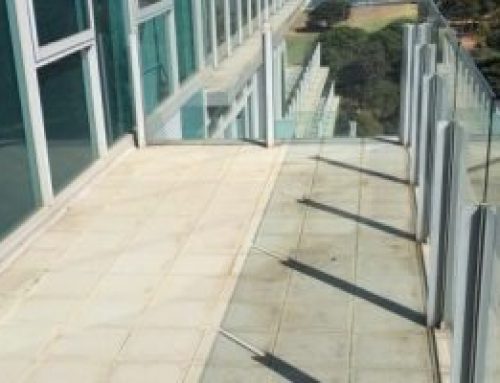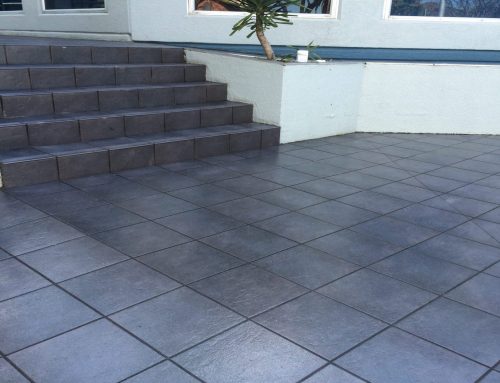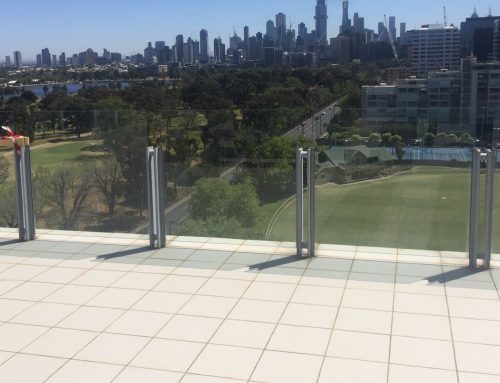How to Fix Water Damaged Balcony Tiles
Is your Balcony in need of a complete renovation? Is it tired, deteriorated and outdated – or collapsing and now unsafe?
Then you are probably due to re-tile your balcony. Re-tiling a Balcony is required where a balcony leak has damaged the waterproof membrane and substrate below the tiles.
In this article we will talk about the method involved in removing and replacing the tiles on your balcony.
The Process of Re-tiling a Balcony
1. Strip the Balcony
Strip the balcony, pulling up all existing floor and skirting tiles as well as any sheeting and screed below the tiles. Please note – there will be a lot of rubble from this and you will require a skip and tip run to remove the rubbish from site.
2. Correct the Substrate
For sheeted balconies
Check the timber joists and ensure there is no water damage, then lay new industrial waterproof sheeting to fall away from the building.
TIP: Don’t use chipboard substrates, tile underlay or slate underlay as part of the waterproof system. Always use a concrete, compressed fibre cement or marine-grade structural floor substrate and make sure it is compatible with the waterproofed membrane system being used.
For screeded balconies
Check the slab and repair with 2-part epoxy resins if required. Then screed the balcony to create the correct fall for water to adequately fall towards the drainage outlets.
TIP: Don’t think that water will find its own way to the drainage point. Make sure you sheet, screed and tile the balcony floor with correct grades, to ensure water will not flow in the wrong direction or pond on the balcony floor.
3. Waterproof
Membrane the balcony in accordance with Australian Standards AS 4654.2-2012 and ensure the vertical upward termination heights of the membrane is not less than that specified in Table A1. of the Standard. For screeded balconies, ensure you waterproof below and above the screed. Read more on how to waterproof a balcony here.
TIP: Don’t assume all waterproofed membranes perform the same – never use bathroom-grade waterproof membranes. Only use a waterproofing membrane that has been tested and certified as compliant with AS 4654 for external above-ground membranes.
4. Tile
Tile the balcony using an external, adequately slip-rated tile, applied with industrial tile adhesive. Always apply a skirting tile on top of the floor tile to protect the perimeter of the building from any water ingress.
5. Grout and Seal
Grout the balcony using grout mixed with waterproof additives to increase waterproofing properties. Seal the main junction joints around the perimeter of the balcony using industrial waterproof seals.
Whilst it may sound straight-forward, if you waterproof your balcony incorrectly it can cause major water damage to your building which can be extremely costly to fix. SCR does not recommend this as a DIY project. SCR Melbourne will also use a flexible epoxy grout rather than just your normal grout at no additional cost!
Want to leave it to the experts? Just ask SCR Melbourne for a FREE, No-Obligation Quote – click here.



